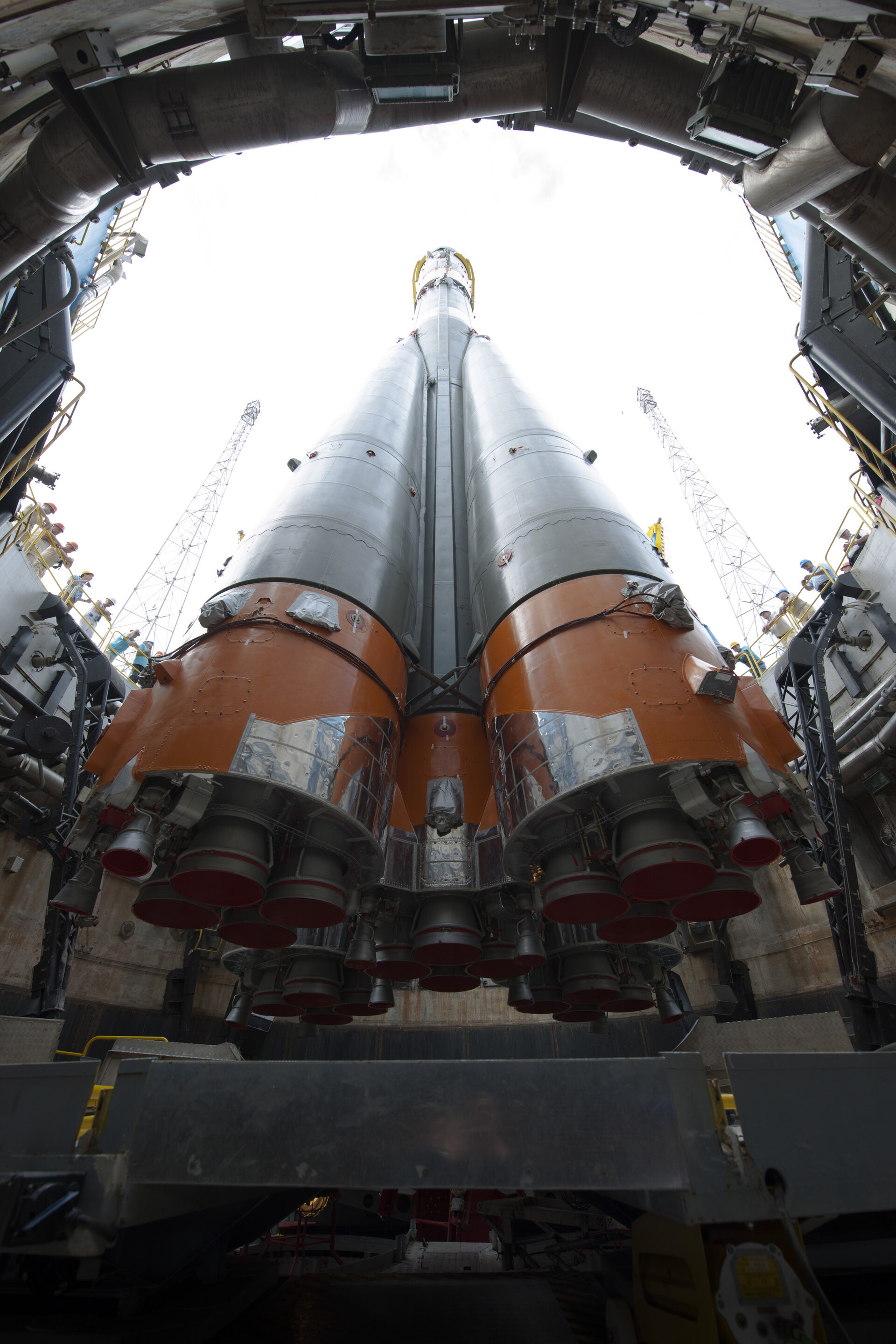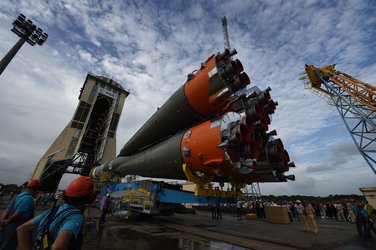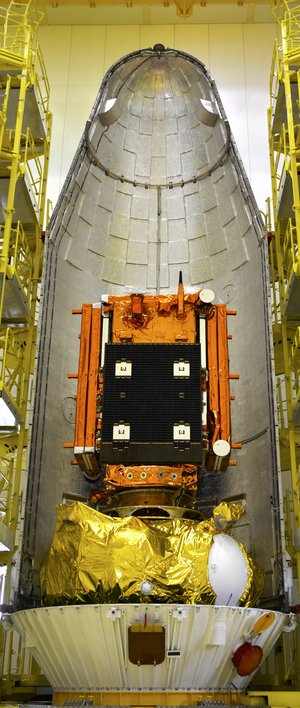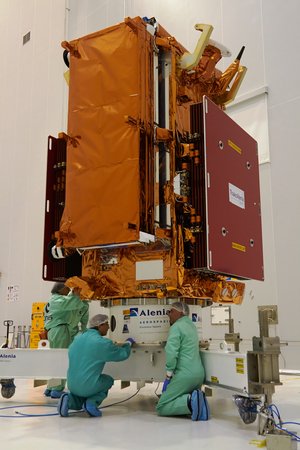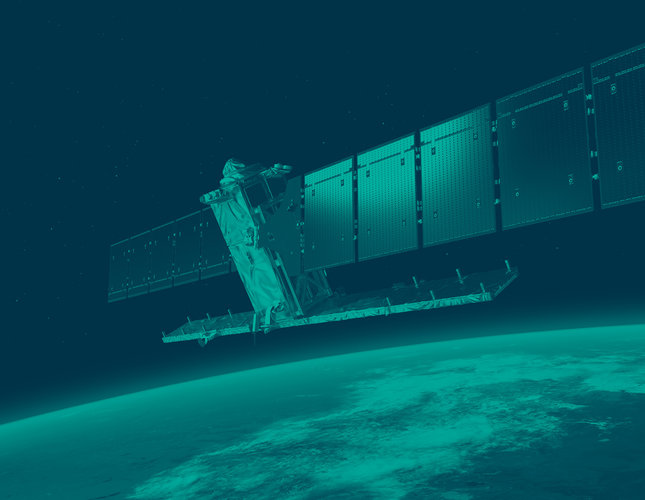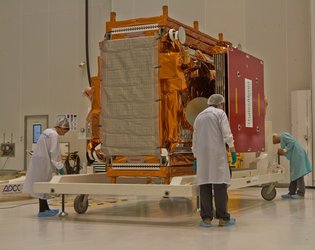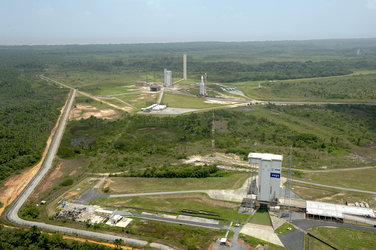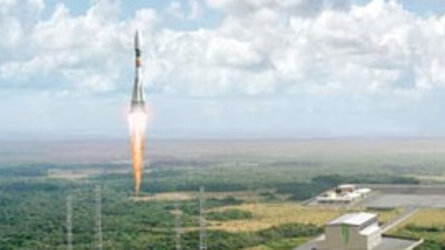Sentinel-1 ready for launch
With Sentinel-1A now sitting atop its Soyuz rocket, liftoff from Europe’s Spaceport in Kourou, French Guiana is set for today at 23:02 CEST (21:02 GMT).
Official authorisation to launch was given following yesterday’s Arianespace final review. This process confirmed the readiness of the rocket and its passenger, along with the readiness of the launch site and network of tracking stations.
With the weather also fair, everything is currently ‘green’ and on schedule. The next step will be to fuel the rocket, which starts four hours before liftoff.
Sentinel-1A has been at the launch site since the end of February and has been through numerous tests to make sure that everything is in perfect condition to provide essential radar imagery for Europe’s Copernicus programme.
Sentinel-1A marks the beginning of a new era in observing Earth from space. An era that focuses on providing data for everyday applications to improve the way the environment is managed, benefiting us all.

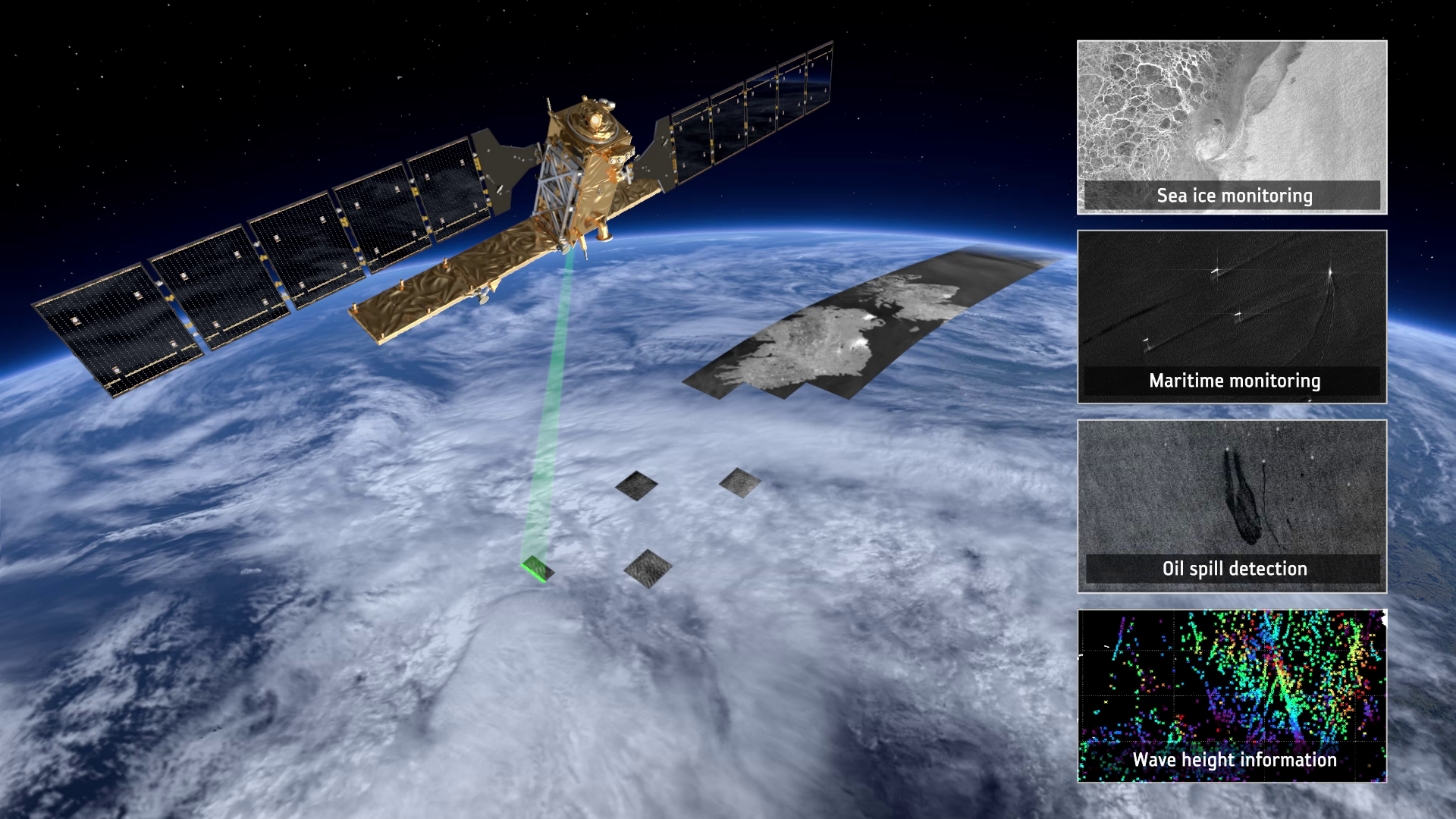
Access the video
Weather satellites have been providing operational data for years, and now the family of Sentinel missions will do the same for environmental monitoring.
Guido Levrini, the Copernicus Space Segment Programme Manager, said, “On one side, this launch is the culmination of a decade of personal professional investment and on the other side it is the beginning of a large-scale construction. It is the first stone, the foundation of a soon-to-materialise splendid cathedral – we already get a glimpse of its cupola from the distance.”
Sentinel-1 is a two-satellite constellation: Sentinel-1B will be launched next year.
A further five Sentinel missions will be launched in the coming years. Each carries state-of-the-art technology to deliver a stream of complementary imagery and data tailored to the needs of Copernicus users.
The data are not only open to users worldwide, but are also free of charge.


